Corn Grain Yield in Relation to Stress During Ear Development
Crop Insights by Stephen D. Strachan, Ph.D., DuPont Research Scientist
5/14/2019
Crop Insights by Stephen D. Strachan, Ph.D., DuPont Research Scientist
5/14/2019
Environmental stresses during any of 4 ear development stages significantly affect the number and weight of harvestable kernels and subsequent grain yield in corn. The 4 critical stages are:
This Crop Insights article illustrates corn ear responses to some of the more common stresses that occur and explains why corn ears respond as they do. Corn developmental stages used in this article are based upon the Iowa State Publication “Corn Growth and Development” (Abendroth et al., 2011.)
Depending upon CRM, the corn plant determines the maximum number of rows around the ear at approximately the V5 to V8 stage in its life cycle. Figure 1 shows a picture of a developing corn ear at the V9 stage.

Figure 1. Development of the primary ear, node 14 (dome ~ 400µm.) Courtesy of Dr. Antonio Perdomo, Pioneer.
The meristematic dome is present at the tip of the ear indicating the developing ear is still producing new rows of ovules along the length of the ear. The upper two-thirds of the ear shows a series of single rows of developing ovules. These ovules eventually divide to produce a pair of rows from each single row. This paired formation is visible near the base of the ear. This division explains why a corn ear always has an even number of kernel rows around the ear.
Placement of the primary ear varies with corn genetics. The corn pictured in Figure 1 is 103 CRM, and the primary ear (the ear to be harvested) is located on the V14 node. In general, corn lines varying from approximately 103 to 118 CRM produce the primary ear on the V13 or V14 node. Corn lines of earlier maturity will place the primary ear on a lower node, such as the V12 node, while corn lines of longer maturity may place the primary ear on a higher node.
The node of primary ear placement is an excellent reference point to determine when ear initiation starts. A general guideline is to determine the node containing the primary ear and then subtract seven. This V stage is approximately when the number of kernel rows around the ear is being established. For example, the corn line in Figure 1 positions the primary ear at the V14 node; thus, the number of kernel rows around the ear is being established at or very near the V7 stage.
Establishment of the number of kernel rows around the ear is a critical event in the life cycle of a corn plant. If a particular corn line normally has 16 or 18 kernel rows around the ear and the ear in question has less than the normal number, then some sort of stress was present at or just before this critical stage. From a diagnostic perspective, if an ear has 12 kernel rows around instead of the normal 16, then the stress factor that caused this event was present at approximately V7. This information helps to establish a “time window” in looking for the environmental event that caused ear response to occur.
The maximum number of ovules that the entire corn ear will produce is determined by the time the corn plant passes through approximately 4 more V stages.
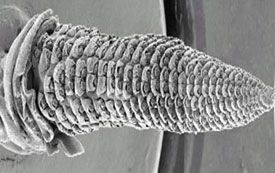
Figure 2. Development of the primary ear. Courtesy of Dr. Antonio Perdomo, Pioneer.
Figure 2 illustrates an ear harvested at the V12 stage from the same corn line as that in Figure 1. The meristematic dome is no longer present, so maximum potential ovule formation is now established. Paired ovule formation is apparent along nearly the entire length of the ear. From a diagnostic perspective, if an ear has the proper number of kernel rows around the ear but the ear is shorter than normal, then sufficient stress of some sort while the corn plant was around the V12 developmental stage may have caused this event
Cell division inhibitor herbicides, such as sulfonylurea herbicides, can substantially affect ear formation when mis-applied during ovule formation. For most corn genetics, this is while the plant is between V7 and V10. Corn plants must metabolize these herbicides for crop safety. If metabolism is incomplete and sufficient active herbicidal ingredient is translocated to the developing ear, ovule formation may be inhibited. Such inhibition may stop ovules at the single-row developmental stage from doubling to form the paired row. When this occurs, the corn ear shows an abrupt change from a certain number of rows around the base of the ear to a lesser number of kernel rows around the ear at the tip. This is sometimes referred to as “pinched ears” (Figure 3.)
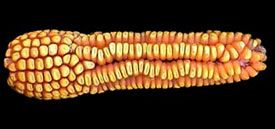
Figure 3. Ear pinching due to sulfonylurea herbicide misapplied during ear formation.
Growth of the developing ovules between the stages of ear initiation until pollination can be thought of as a dynamic, 2-step process. The first step is the initiation of the ovules as explained in the previous section. The second step is the cell differentiation and cell division that must occur to prepare these ovules for fertilization. At any moment in time between ear initiation and pollination, ovule formation differs along the length of the developing corn ear. Ovules near the base of the ear develop first and newer ovules will continue to form as development progresses toward the tip of the ear. After the corn plant has established the maximum number of ovules, the nutrients, energy, and water to sustain these developing ovules must be supplied. If all resources are adequate, ovules along the entire ear will develop sufficiently to produce silks and be receptive to pollen.
If resources are limited, selected ovules will be sacrificed to allow the corn plant to adequately support the remaining viable ovules. Which ovules are sacrificed depends upon the amount, type, and duration of the stress. If the stress is a longer-term general stress, ovules near the tip of the ear are sacrificed, resulting in viable ovules only at the base of the developing ear. Ovules near the base of the ear are more likely to remain viable because these ovules are further developed and are closer to the source of nutrient supply. If the environmental stress is very short but very intense, the ovules that are sacrificed may be anywhere along the corn ear.
Figure 4 illustrates a corn hybrid grown in a semi-tropical climate. The same hybrid was planted every 4 days from December 20 to 28. During early ear formation, this corn was subjected to 2 single days of cold weather in which the temperature was less than 50 °F (10 °C). The corn from the earliest planting date was either past or nearly past a critical point in ovule formation. The corn planted at the middle date was midway through this critical phase, while the latest planted corn was just entering the critical developmental period. Ovules formed after this environmental stress had passed developed normally.
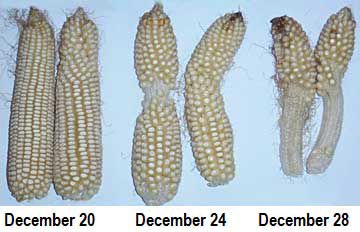
Figure 4. Cold chilling shock at different stages of development (date indicates planting date in Southern Hemisphere.)
A physiological response that produces very short ears, sometimes called “beer can ears” appears to be due to a combination of environmental stress, possibly cold stress or drought stress during a critical stage in ovule formation, and genetics (Figure 5.)

Figure 5. Very short ears, also called “beer can ears.”
Arrested ears are associated with application of fungicide or insecticide with NIS or COC in the two-week period preceding pollination (Figure 6). Arrested ears differ from “silkballing.” “Silkballing” occurs when the silks lose orientation during the pollination process and begin to grow in many different directions inside the husk. We are not certain what causes “silkballing”. The event may be related to a combination of a brief interval of cold stress or drought stress sometime during the silk growth cycle and certain corn genetics.

Figure 6. Arrested ear resulting from foliar application of an adjuvant at V14 growth stage.
The key to distinguishing between “beer can ears” and “silkballing” is to determine if silks are still present in the husk. The environmental stress that causes “beer can ears” produces either short ears or ears with long cobs and kernel set only near the base of the ears. Very few or no silks are present inside the husks of these ears. The environmental stress that causes “silkballing” may also produce long ears with kernel set only near the base of the ear. The difference is “silkballed” ears will very often contain a mass of silks inside the husks. Silks remain attached to developing ovules until these ovules are successfully fertilized. These ovules degrade if they are not fertilized. However, the silks can often remain in the husk until the ear is mature.


Figure 7. Silkballing” (top) results in cobs with bare ends.
Successful fertilization of mature ovules requires viable pollen to land on receptive silks. Insect pests, such as adult corn rootworms, may clip silks as they feed, resulting in poor pollination with subsequent poor kernel set. Management and diagnostics for adult rootworms are presented in a Crop Focus article (Rice, 2015.)
There are two basic parts to the pollination process. First, viable pollen must land on receptive silks, and second, the silks must support the formation of pollen tubes to allow male gametes to fuse with female gametes inside the ovule. A large portion of mature pollen is usually released from corn anthers in mid-morning, depending upon environmental conditions. A minimum of 100 grains of pollen per square centimeter per day is needed to successfully pollinate a corn field. Pollen may lose viability within a few minutes if air temperatures are high (approximately 104 °F or 40 °C) and water deficit stress is present. Pollen grains contain about 80% water when first shed. These pollen grains die when the water content decreases to about 40%.
A lot of corn is successfully pollinated under higher temperature conditions. If soil moisture is adequate and the corn plant can transpire water rapidly enough to supply necessary water to the pollen, the pollen remains viable long enough to properly shed and complete the fertilization process. However, if the water supply is inadequate, pollen will die prematurely and not complete the fertilization process.
The second part of successful fertilization of ovules is the formation of the pollen tube and deposition of male gametes inside the ovule. This process relies heavily on the female portion of the plant because the silks supply all of the necessary nutrients and water for growth of pollen tubes. Based upon all of the pictures we have seen to date, viable pollen grains adhere to silk trichomes -- not directly to the silks -- to start the fertilization process.
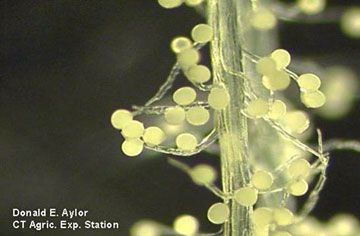
Figure 8. Pollen attached to silk trichomes. Courtesy of Dr. Don Aylor, University of Connecticut.
Trichomes are hair-like projections that extend from the main stem of the silk, much like root hairs extend from a plant root. Within a few minutes after landing on the trichomes, the pollen grains start to initiate pollen tubes. These pollen tubes seem to always grow near the silk vascular bundle. This may occur because these vascular tissues contain a readily available source of water and nutrients essential for growth

Figure 9. Pollen tubes growing along silk vascular tissue. Courtesy of Dr. Antonio Perdomo, Pioneer.
Depending upon water availability and environmental conditions, it may take just a few hours to approximately one day for pollen tubes to grow all of the way to the ovules. When the corn plant is under greater drought stress, pollen tube growth is slower and the potential for successful fertilization decreases.
Environmental stress during pollination can have substantial effects on grain yield. For a specific hybrid, approximately 85% of grain yield is correlated with the number of kernels produced per acre with the remaining 15% being the weight of individual kernels at harvest (see Figure 10.)
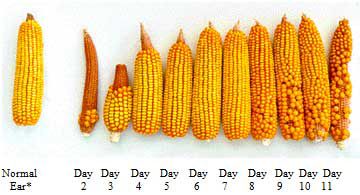
*silks exposed to pollen daily

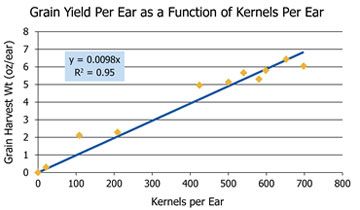
Figure 10. Relating kernel count to grain yield.
The amount of water available for silk growth substantially influences when silks emerge, their rate of growth, their length of receptivity, and their ability to supply water and nutrients to support pollen tube growth and fusion of gametes. Silk growth during pollination and grain production, as well as problems associated with improper or inadequate silk growth, are presented in another Crop Insights article (Strachan, 2016). From a diagnostic perspective, corn plants that are growing under stress during pollination produce ears with portions of the cobs being barren (examples shown in Figure 12). Portions of the cob are barren because mature ovules were not properly fertilized. These unfertilized ovules begin to disintegrate and disappear before the ear reaches physiological maturity.
A successfully fertilized kernel goes through two phases in the approximately eight weeks between pollination and physiological maturity.
For approximately the first 3 weeks after pollination, embryo cells are rapidly differentiating and dividing to produce the tissues necessary for the embryonic corn plant contained within the kernel. The remaining weeks of grain fill are devoted primarily to starch and storage tissue deposition to support new plant growth when this generation of seed is planted. All kernels are attached to the cob (Figure 11), and all kernels compete for available food and water.
Only those kernels that receive ample moisture and nutrients live. Typically, kernels near the butt of the ear develop a little earlier and are closer to the source of nutrients than kernels at the tip of the ear.
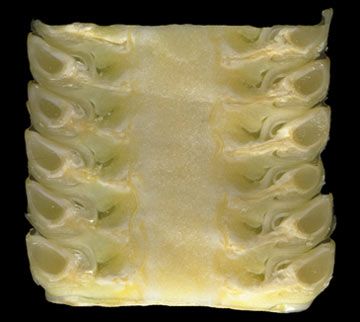
Figure 11. Kernel attachment to the cob.
When stress is present, the ear will often sacrifice the tip kernels in favor of kernels at the butt of the ear. Depending upon the severity of the stress, tip kernel dieback will continue until the point at which the corn plant has the ability to supply adequate water and nutrients to support growth of the remaining kernels.
Kernel formation or the lack thereof is an indicator of the time of stress occurrence – whether it occurred before or during pollination or during grain fill. If a portion of the cob is barren with no evidence of viable kernel formation, the stress occurred at or before pollination. If a portion of the cob shows either very small kernels or kernel dieback, the stress occurred sometime during the grain-filling process. If tip kernels did not abort but their test weight is decreased, the stress occurred during the very latter part of grain fill.
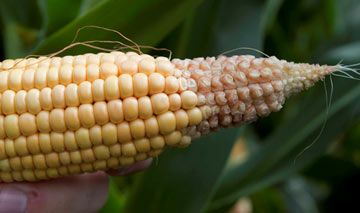

Figure 12. Stress during grain fill very often results in tipkernel die-back or some sort of kernel abortion.
The size, placement, and amount of corn kernel set documents when the ear was subjected to environmental stresses and the severity of these stresses. Knowledge of ear development helps agronomists and corn producers determine when stresses occurred. It also provides a starting point for developing management practices to mitigate these stresses in the future. This could lead to more complete pollination and grain fill in addition to subsequent higher grain yields.
Abendroth, L., R.W. Elmore, M.J. Boyer, and S.K. Marlay. 2011. Corn growth and development. PMR 1009. Iowa State Univ. Extension.
Rice, M.E. 2015. Corn rootworm silk feeding. Crop Focus. Pioneer, Johnston, IA.
Strachan, S. D. 2016. Relating silk emergence at pollination to kernel set at harvest. Crop Insights Vol. 26, No. 9. Pioneer, Johnston, IA.
PIONEER® brand products are provided subject to the terms and conditions of purchase which are part of the labeling and purchase documents.
The foregoing is provided for informational use only. Please contact your Pioneer sales professional for information and suggestions specific to your operation. Product performance is variable and depends on many factors such as moisture and heat stress, soil type, management practices and environmental stress as well as disease and pest pressures. Individual results may vary.